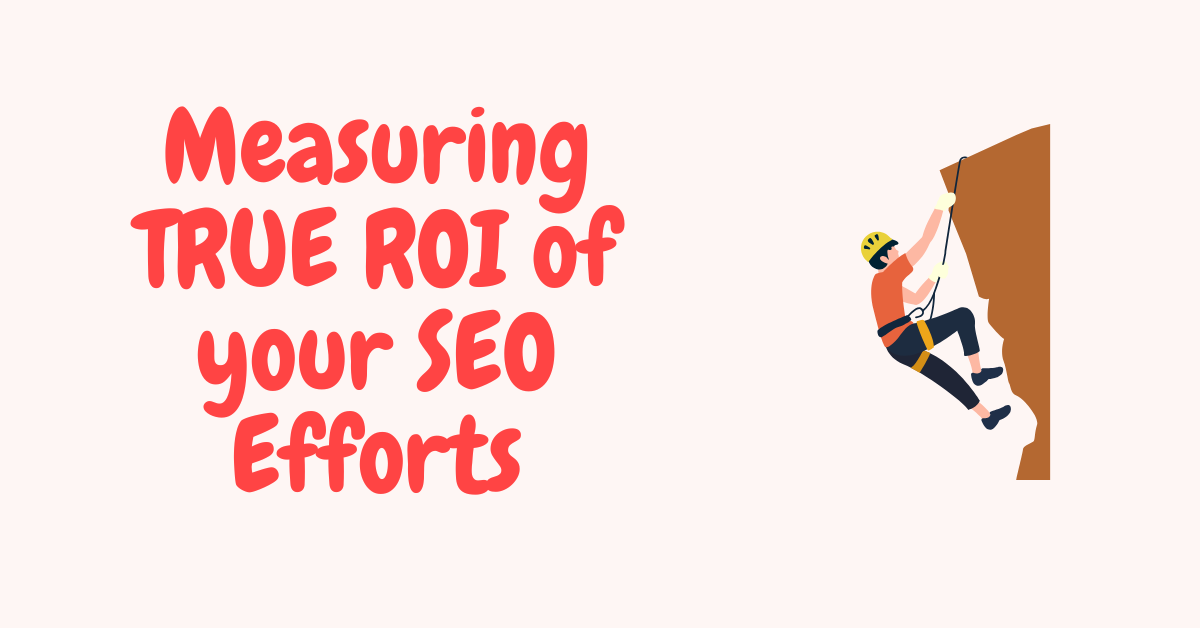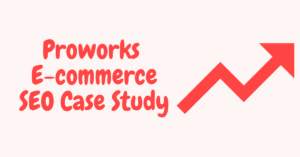In the dynamic digital landscape of Kenya, many businesses are investing in Search Engine Optimization (SEO) with the hope of climbing Google’s rankings. While seeing your website at the top of search results for a key term like “best mitumba bales Nairobi” or “affordable solar panels Kenya” can certainly bring a thrill, true SEO success goes far beyond vanity metrics like rankings and raw organic traffic.
As an SEO professional operating right here in Kenya, I constantly emphasize to our clients that the ultimate measure of SEO’s effectiveness is its impact on their bottom line: conversions, leads, sales, and ultimately, customer lifetime value (CLTV). If your SEO efforts aren’t translating into tangible business growth, then even a #1 ranking is just a glorified billboard with no cash register.
This blog post will dive deep into how Kenyan businesses can accurately measure the true Return on Investment (ROI) of their SEO efforts, moving past superficial metrics to focus on what truly drives profitability.
The Problem with Vanity Metrics
Let’s be clear: metrics like keyword rankings, organic impressions, and even overall organic traffic volume aren’t inherently bad. They can be indicators of visibility and progress. However, when treated as the sole measure of success, they become “vanity metrics” – impressive on paper, but lacking real business impact.
Why are vanity metrics particularly misleading for Kenyan businesses?
- Diverse Search Intent: A high ranking for “shoes” might bring a lot of traffic, but if you sell high-end leather shoes in Nairobi and the traffic is mostly students looking for cheap rubber shoes, your conversion rate will suffer. The intent behind the search matters.
- Mobile-First Nation: Kenya is overwhelmingly a mobile-first nation. Your site might rank well on desktop, but if it’s slow or poorly optimized for mobile, a significant portion of your organic traffic will bounce, never converting. Rankings don’t tell you about mobile user experience.
- Offline Conversions: For many Kenyan businesses (e.g., hardware stores, clinics, salons, real estate agents), online traffic often leads to offline actions – a phone call, a WhatsApp inquiry, or a physical store visit. Traditional ranking reports miss these crucial conversions.
The True Pillars of SEO ROI: Conversions, Leads, Sales, and CLTV
To truly measure SEO ROI, you need to connect your organic traffic directly to the actions that generate revenue for your business.
1. Conversions:
A conversion is any desired action a user takes on your website. This is the bedrock of real SEO ROI.
- Examples for Kenyan Businesses:
- E-commerce: A completed purchase (e.g., buying electronics on an online shop, booking a safari).
- Service Providers (e.g., plumbers, electricians, digital marketers): A submitted contact form, a direct phone call (tracked!), or a WhatsApp message initiated from the website.
- Real Estate Agencies: A property inquiry submission, a request for a callback, a download of a property brochure.
- Educational Institutions: An application form submission, a prospectus download, a course inquiry.
- Clinics/Hospitals: An appointment booking, a health service inquiry.
2. Leads:
For many B2B or high-value service businesses, an organic visit might not immediately lead to a sale but rather to a qualified lead.
- Example for a Kenyan B2B IT Solutions Provider: A visitor from organic search downloads a whitepaper on “Cloud Computing for Kenyan SMEs” or requests a demo of a software solution. This indicates strong interest and the potential for a sale down the line.
3. Sales/Revenue:
This is the ultimate bottom line for e-commerce or businesses with direct online payment options.
- Example for a Kenyan Online Fashion Retailer: Tracking the actual revenue generated from organic search traffic, distinguishing between purchases made directly from organic discovery versus returning customers from other channels.
4. Customer Lifetime Value (CLTV):
This is where advanced SEO ROI measurement truly shines. CLTV is the total revenue a business can reasonably expect from a single customer account throughout their relationship with the business.
- Why CLTV is Crucial for Kenyan Businesses: Many businesses in Kenya thrive on repeat customers and loyalty (e.g., grocery deliveries, subscription services, professional services like accounting or legal advice). A customer acquired through SEO might make a small first purchase but become a high-value client over years.
- Calculating Basic CLTV:
- Average Purchase Value (APV): Total Revenue / Number of Purchases
- Average Purchase Frequency Rate (PFR): Total Purchases / Unique Customers
- Customer Value (CV): APV x PFR
- Average Customer Lifespan (ACL): Average number of years a customer remains active.
- CLTV = CV x ACL
Technical Deep Dive: Attributing Conversions to SEO Efforts
This is where your analytics setup becomes critical. Google Analytics 4 (GA4) is your most powerful ally here.
1. GA4’s Event-Driven Model for Conversions:
Unlike Universal Analytics’ “Goals,” GA4 uses an “event-driven” model, which is much more flexible and accurate for tracking diverse user interactions.
- Setting Up Conversions in GA4:
- Identify Key Events: Determine which user actions on your site are most valuable (e.g.,
form_submit,button_click,purchase). - Ensure Events are Firing: Use GA4’s DebugView to confirm that these events are being correctly sent when users perform the desired actions. This often involves setting up events via Google Tag Manager (GTM).
- Mark as Conversion: In GA4, navigate to
Admin>Eventsand simply toggle the desired event to “Mark as conversion.”
- Identify Key Events: Determine which user actions on your site are most valuable (e.g.,
- Kenyan Specifics for Event Tracking:
- M-Pesa Payments: This is paramount for most Kenyan e-commerce. Track the initiation of an M-Pesa payment, successful payment confirmation (from your payment gateway’s callback), and even cancellations. These are crucial conversion points.
- Implementation: This usually requires working with your developer and payment gateway (e.g., Safaricom Daraja API, IntaSend, Pesapal) to send custom events to GA4 upon payment status changes.
- WhatsApp Inquiries: Many Kenyans prefer WhatsApp for business communication. Track clicks on “WhatsApp Us” buttons.
- Implementation: Use GTM to track clicks on elements with specific WhatsApp links. Send a
whatsapp_clickevent to GA4.
- Implementation: Use GTM to track clicks on elements with specific WhatsApp links. Send a
- Direct Phone Calls: Especially for service businesses, tracking calls made from the website is vital.
- Implementation: Use GTM to track clicks on
tel:links. For more advanced tracking, consider call tracking solutions (though less common in Kenya, some regional providers or bespoke solutions might exist) that integrate with GA4 to attribute calls back to their source.
- Implementation: Use GTM to track clicks on
- “Find Us on Map” Clicks: For businesses with physical locations (shops, offices, clinics), tracking map clicks can be a strong indicator of offline interest.
- M-Pesa Payments: This is paramount for most Kenyan e-commerce. Track the initiation of an M-Pesa payment, successful payment confirmation (from your payment gateway’s callback), and even cancellations. These are crucial conversion points.
2. Attribution Models:
GA4’s default attribution model is Data-Driven Attribution (DDA). This is a game-changer because it assigns credit to all touchpoints on the conversion path, rather than just the last one.
- Why DDA Matters for SEO: A user might discover your business via an organic search (first touch), then later return via social media, and finally convert after a direct visit. DDA ensures SEO gets credit for its role in the initial discovery and nurturing the lead.
- Viewing Attribution in GA4: Navigate to
Advertising>Attribution>Conversion PathsorModel Comparisonto see how different channels, including “Organic Search,” contribute to conversions.
3. Integrating Google Search Console (GSC):
GSC provides invaluable data on how users find your site on Google search results. While it doesn’t directly track conversions, integrating it with GA4 allows you to connect organic search queries to user behavior and conversions.
- Setting it Up: In GA4, go to
Admin>Product Linking>Search Console Linking. - Insights: See which queries lead to clicks, average position, and then (in GA4) how users from those queries engage and convert on your site. For example, if “emergency plumber Nairobi” ranks high and brings traffic, but those users don’t convert, you might have a landing page issue.
4. CRM Integration (for Leads & CLTV):
For businesses tracking leads and sales in a Customer Relationship Management (CRM) system, integrating GA4 data with your CRM is the gold standard for true ROI measurement.
- How it Works: When a lead is generated from your website (e.g., a contact form submission), ensure that source information (including “Organic Search”) is passed to your CRM. This can be done via hidden fields in forms (e.g., using a tool like Attributer or custom scripts) or through direct API integrations.
- Connecting the Dots in Your CRM: Once in the CRM, you can track the lead’s progress through your sales funnel. You can then report on:
- Number of qualified leads generated by SEO.
- Number of sales closed from SEO-generated leads.
- Average revenue per SEO-generated sale.
- Customer Lifetime Value of SEO-acquired customers. This allows you to see if customers who find you via organic search are more valuable over time.
- Kenyan Example: A logistics company in Mombasa tracks inquiries for cargo shipping. If their CRM shows that leads originating from “freight forwarding Kenya” searches have a higher closing rate and larger average contract value, they know their SEO investment is paying off.
Examples of True SEO ROI for Kenyan Businesses:
Let’s put theory into practice with some relatable Kenyan scenarios:
Scenario 1: E-commerce Store (e.g., selling electronics across Kenya)
- Vanity Metric: 50% increase in organic traffic.
- True ROI Focus:
- Conversions: Track “purchase” events.
- Revenue: Monitor total revenue generated directly from organic search.
- M-Pesa Specifics: Set up events for
mpesa_checkout_initiatedandmpesa_payment_successful. - Actionable Insight: If organic traffic increased but M-Pesa successful payments didn’t, investigate site speed on mobile, clarity of the checkout process, or pricing competitiveness for organic visitors. Maybe your “affordable smartphones” keyword is bringing low-intent users.
- Example Calculation: If SEO costs KES 50,000 per month and generates KES 200,000 in direct organic sales, your immediate ROI is ((200,000 – 50,000) / 50,000) * 100% = 300%. Add CLTV to this for long-term value.
Scenario 2: Real Estate Agency (e.g., properties for sale in Kilimani)
- Vanity Metric: Ranking #1 for “Kilimani apartments for sale.”
- True ROI Focus:
- Conversions:
property_inquiry_form_submit,schedule_viewing_click,whatsapp_property_inquiry. - Leads: Qualified inquiries that result in follow-up calls or viewings.
- Sales: Number of property sales directly attributed to an organic lead.
- CLTV: A client who buys a property today might also use your agency for rentals or future sales.
- Actionable Insight: If “Kilimani apartments” brings many organic visitors but few inquiries, perhaps the content isn’t compelling enough, or the inquiry process is cumbersome. Use GA4’s Funnel Exploration to see where users drop off.
- Example: Organic search generates 10 qualified leads per month. Each lead has a 10% close rate, meaning 1 sale. If the average commission per sale is KES 250,000, and SEO costs KES 40,000/month, then the direct ROI is ((250,000 – 40,000) / 40,000) * 100% = 525%.
- Conversions:
Scenario 3: Local Restaurant/Hotel (e.g., a hotel in Malindi)
- Vanity Metric: Increased organic traffic to the “About Us” page.
- True ROI Focus:
- Conversions:
online_reservation_complete,click_to_call_button(for front desk),menu_download,event_booking_form_submit. - Leads: Direct phone calls for inquiries, specific event space inquiries.
- CLTV: A satisfied guest returning for multiple stays or recommending the hotel.
- Actionable Insight: If organic search for “Malindi beach hotels” is high but bookings are low, examine user experience, pricing, or visibility of booking links. Are users seeing your virtual tour?
- Conversions:
Beyond the Numbers: Qualitative ROI
While quantitative data is king, don’t forget the qualitative benefits that contribute to long-term ROI:
- Brand Authority & Trust: High organic rankings build credibility and trust among Kenyan consumers, making them more likely to choose your business over competitors.
- Reduced Customer Acquisition Cost (CAC): Over time, SEO can significantly lower your CAC compared to paid advertising, as organic traffic is “free” once your content ranks.
- Sustainable Growth: Unlike paid ads that stop when the budget runs out, SEO builds evergreen assets that continue to bring in traffic and conversions long after the initial investment.
Conclusion: Invest in Growth, Not Just Rankings
For any Kenyan business serious about sustainable online growth, shifting focus from mere rankings to measurable ROI is non-negotiable. By leveraging the power of GA4’s event tracking, smart attribution models, and integrating with your CRM, you can paint a clear picture of how your SEO investment directly contributes to leads, sales, and long-term customer value.
Don’t just chase the top spot; chase the shillings in your till. When you can definitively show that your SEO efforts are driving tangible business results, you’re not just an SEO professional – you’re a strategic growth partner.
Ready to transform your SEO reports into a roadmap for profitability? Contact us today for a comprehensive SEO ROI analysis tailored to your Kenyan business goals!




